Listen to our podcast on the General Slocum Disaster:
The General Slocum Memorial Fountain is one of the sole reminders of one of New York City’s darkest days, and it’s not a very awe-inspiring memorial.
This is no dig at the custodians of Tompkins Square Park, where the memorial has been on display since 1906, nor at Bruno Louis Zimm, the fountain’s sculptor whose creation presents two children in idyllic profile, next to an engraving: “They were Earth’s purest children, young and fair.”
Its left side unveils its more tragic context: “In memory of those who lost their lives in the disaster to the steamer General Slocum, June XV MCMIV.”
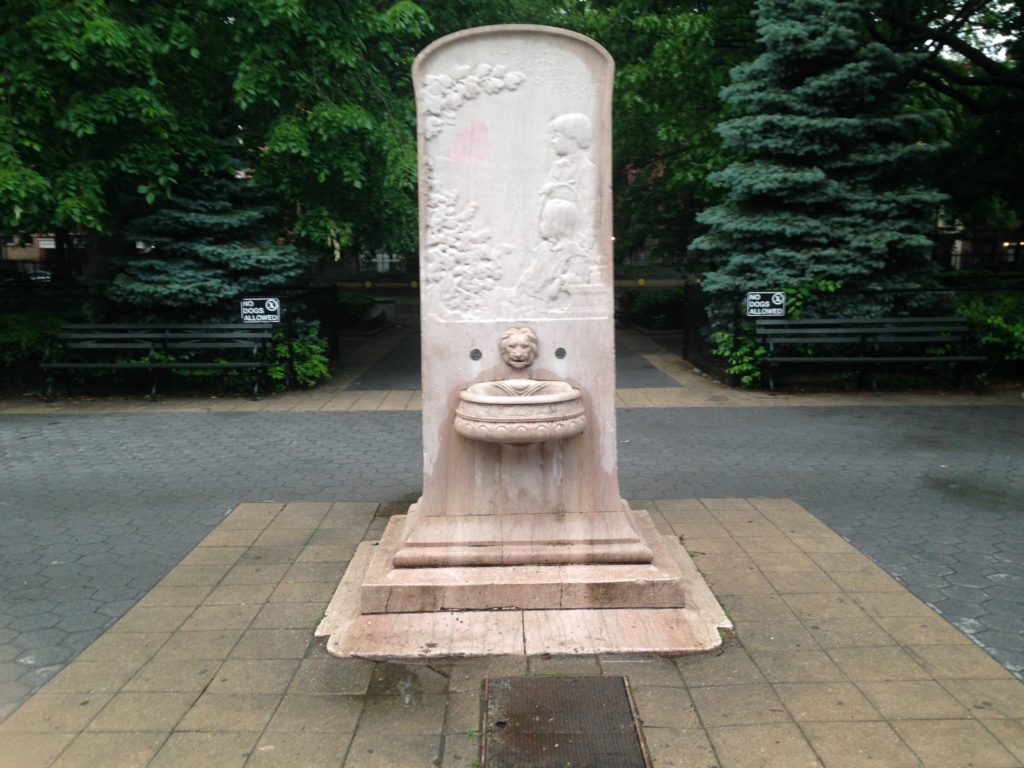
The fountain, while charming and tranquil, is inadequate in expressing the grief and horror that filled New Yorkers on June 15, 1904, when, during a church-sponsored day trip headed for the Long Island Sound, the General Slocum steamboat caught fire and sank in the East River, killing more than a thousand passengers, mostly women and children.
This tragedy was the single deadliest event in New York City history until September 11, 2001.
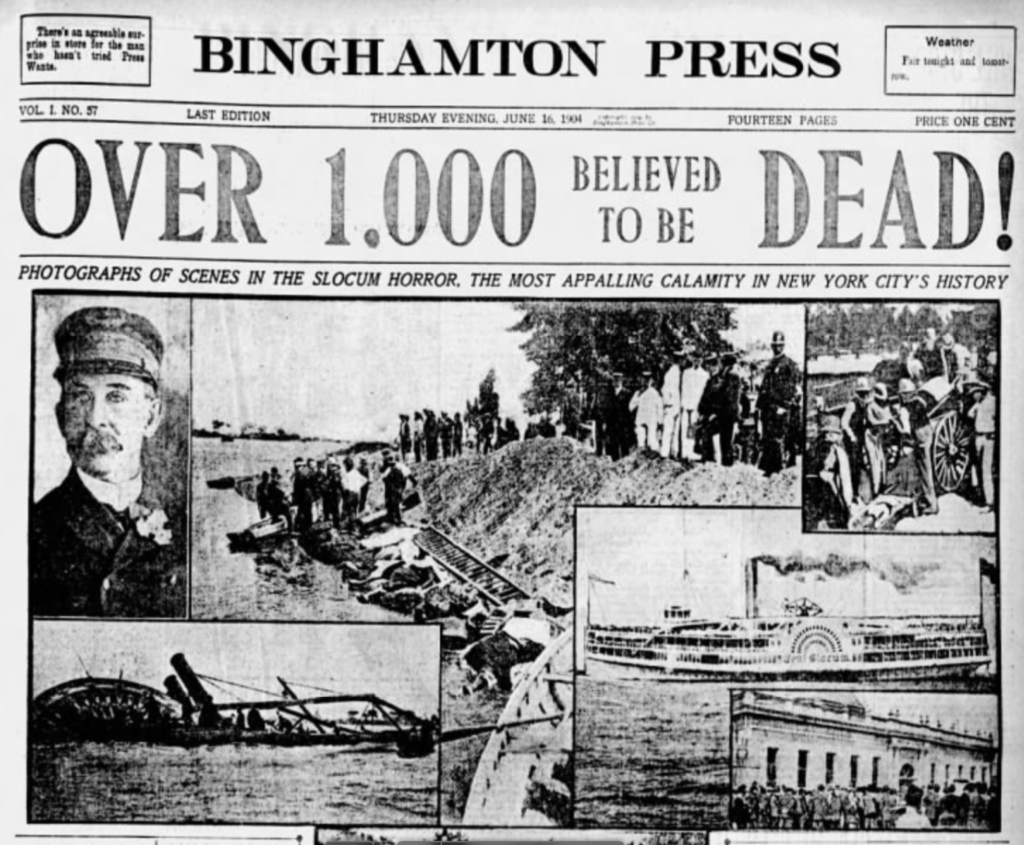
This disaster virtually wiped out the German presence on the Lower East Side—entire families perished, many of whom had just gotten a foothold in New York a generation before. In a single morning the lights of Kleindeutschland, New York’s Little Germany, permanently faded.
The boat had been chartered by St. Mark’s Evangelical Lutheran Church* for their yearly day trip excursion to the Long Island Sound. The East River was filled with excursion steamers such as the General Slocum and its sister ship the Grand Republic (a vessel with a doomed story of its own).
It was a chance for the congregation to briefly break out of the crowded Lower East Side to enjoy a day in the sun. Among the passengers was the Liebenow family, which consisted of parents and their three daughters, Anna, Helen, and Adella, along with several aunts and cousins.
A postcard featuring General Slocum from the Museum of the City of New York collection.
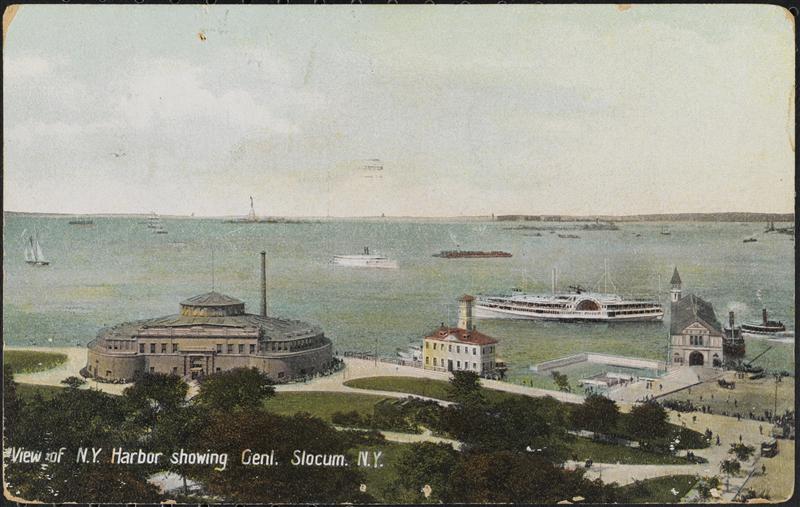
The Slocum left the pier shortly before 9 a.m. and began its slow crawl up the East River.
Captain William Van Schaick had been principally concerned that morning with one turbulent spot up the East River, a dangerous confluence of waters known as the Hell Gate. It had already sunk hundreds of vessels as far back as the seventeenth century. By 1904 it was still a dangerous pass, but on this day, the Hell Gate would not be the problem.
About 30 minutes into the voyage, a child noticed that a small fire had started in the lamp room below the main deck.
A crewman tried to stamp it out, throwing charcoal on it in an effort to contain it. But the flames only grew larger.
Crew members grabbed a firehose—only to find it rotten to the point that it burst wide open. These were not men trained for emergency situations; once they realized the hoses were useless, they simply gave up.

Civilized behavior soon gave way to panic as the flames quickly spread through the lower levels of the steamer, fire jumping from passengers’ clothing to hair.
Families moved away from the flames only to find themselves pressed up against the boat’s railings as panicked crowds pushed forward in search of fresh air. Children lost hold of their parents, never to see them again.
Crowds surged toward the Slocum’s six lifeboats and attempted to hoist them down. But they wouldn’t budge—somebody had wired them to the wall.
The life preservers, never properly inspected, were filled with rotten cork, and several exploded into dust. They were not only useless—they were actually dangerous. Panicked parents strapped preservers to their children and tossed them overboard, only to watch in horror as they sank from sight.
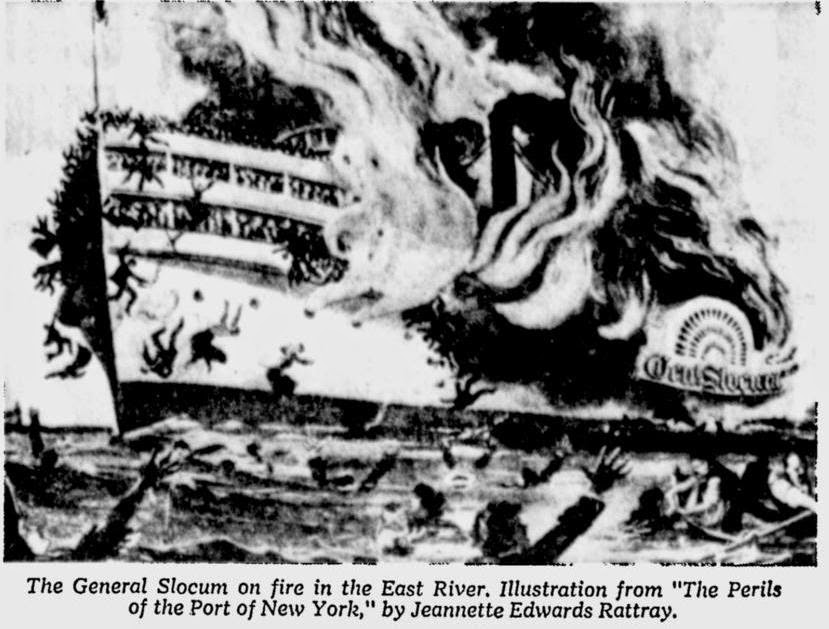
Below deck, passengers were burned to death—huddled in groups and trapped in corners. Smoke choked many, causing unconsciousness; many were trampled underfoot.
Some jumped into the violent waves. “There was little hope that any of the children who jumped overboard could be saved,” reported the New York Evening World. “The current all along the course taken is on a section of the river where not even a strong swimmer can breast the currents. Scores of little ones were sucked in by the whirlpools in Hell Gate.”
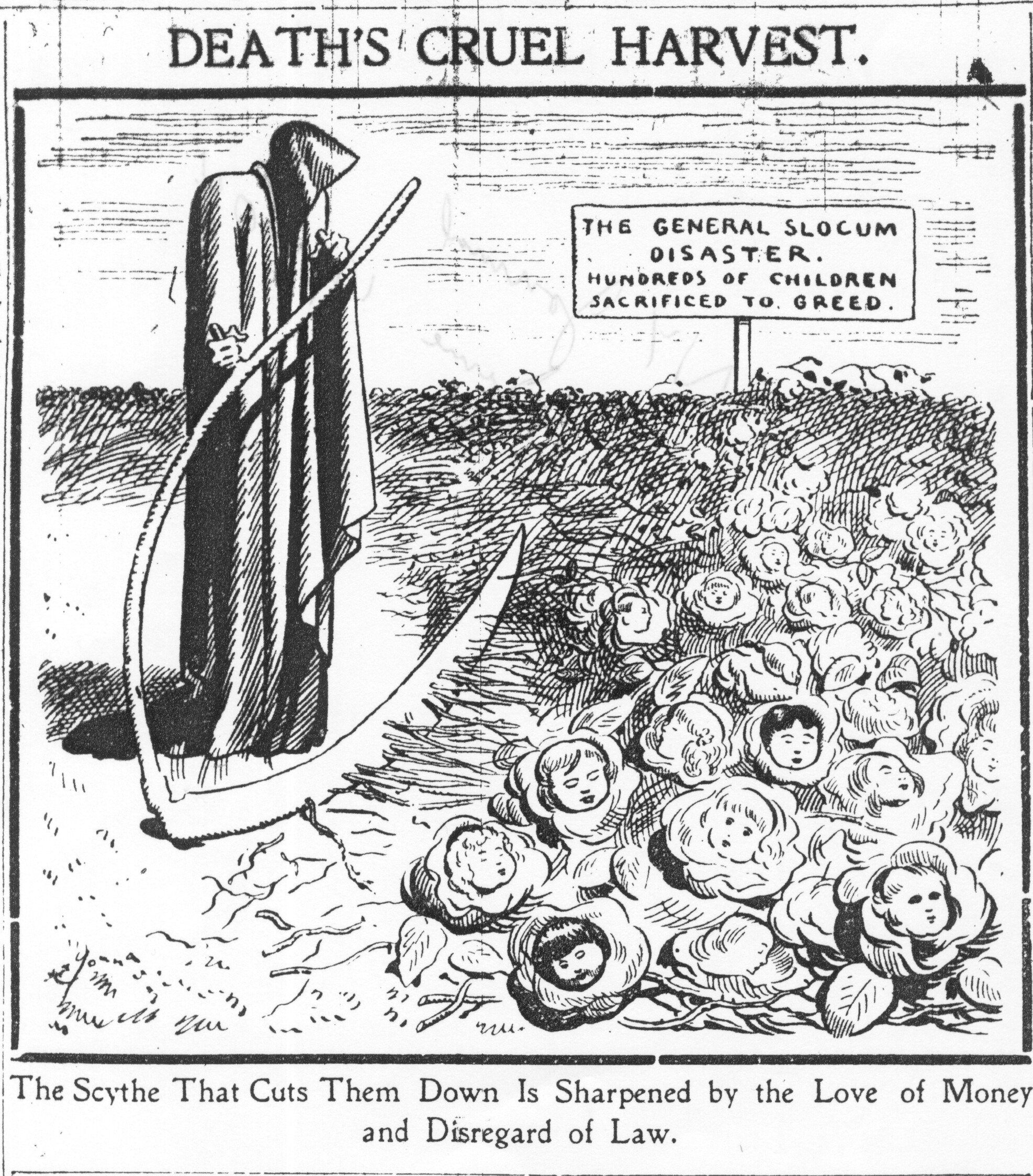
Crowds formed along the shores, and their attention was drawn by the billowing smoke, fire, and horrifying spectacle before them. The captain managed to steer the boat toward North Brother Island, where nurses, doctors, and even patients from the smallpox hospital ran to the water to rescue and attempt to revive those who had washed ashore.
Bodies on the shore of North Brother Island
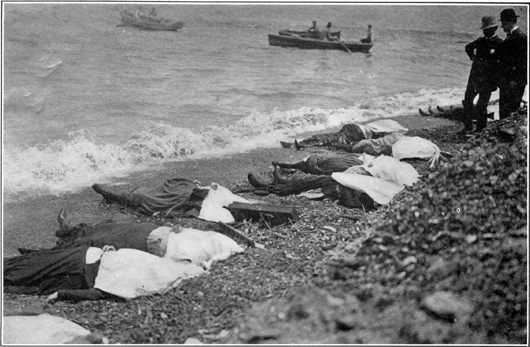
The Slocum eventually floated out into the Long Island Sound, puffing clouds of cork dust into the air, while leaving a trail of tragedy in its wake.
Just after noon, the burning vessel sank, a single paddle box and a smokestack jutting out of the water.

By the final count, 1,021 people perished in the General Slocum disaster that day, making it the deadliest single event in the city’s history up to that date. In the weeks following the disaster, the streets of Kleindeutschland—today’s East Village—were filled with mourners. The community attended funerals in the homes of those who had perished and held solemn processions through the streets.
A mass funeral through the streets of the Lower East Side — “burial of the unidentified”
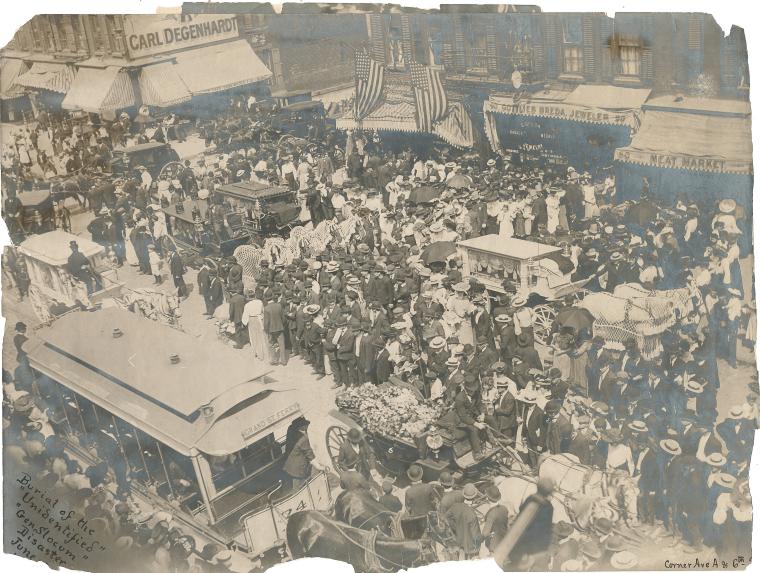
The Liebenow family was hit particularly hard. The entire Liebenow family died in the disaster—all except baby Adella (pictured below), just six months old at the time of the tragedy.
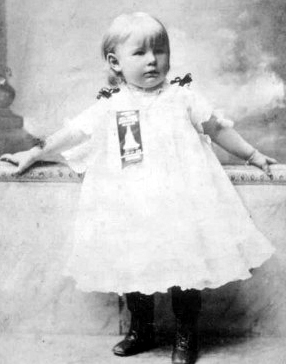
Two years later, now only two-and-a-half years old, Adella was hoisted to a podium here in Tompkins Square Park. She stood before a community that hadn’t yet fully recovered—would they ever?—as she tugged at a cloth to unveil the General Slocum Memorial Fountain.
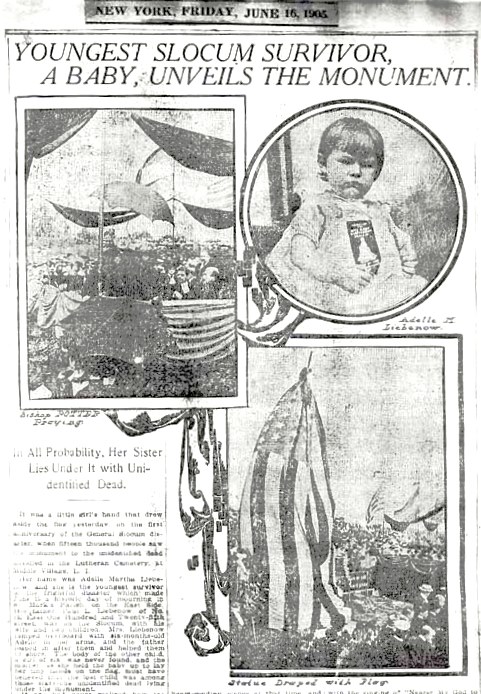
No, the fountain is not perfect. How could it be?
But why hasn’t this tragedy been better memorialized? It’s such an important event in the city’s history, and yet so many don’t know its whole story. There are a few theories about this, many having to do with the anti-German sentiment that cropped up a decade later at the beginning of World War I.
Or was it the social class of the victims that caused it to recede from memory? Adella, who died in 2004, 100 years after the disaster, believed that this might be the case. To a crowd at a 1999 commemoration of the tragedy, she said, “The Titanic had a great many famous people on it. This was just a family picnic.”
*St. Mark’s is located on East 6th Street, between First and Second Avenues, in the heart of New York’s first and largest German neighborhood. A plaque honoring the victims hangs in front.
There’s also a monument to the victims at a cemetery in Middle Village, Queens
The above is an excerpt from our book The Bowery Boys Adventures In Old New York, now available at bookstores everywhere.

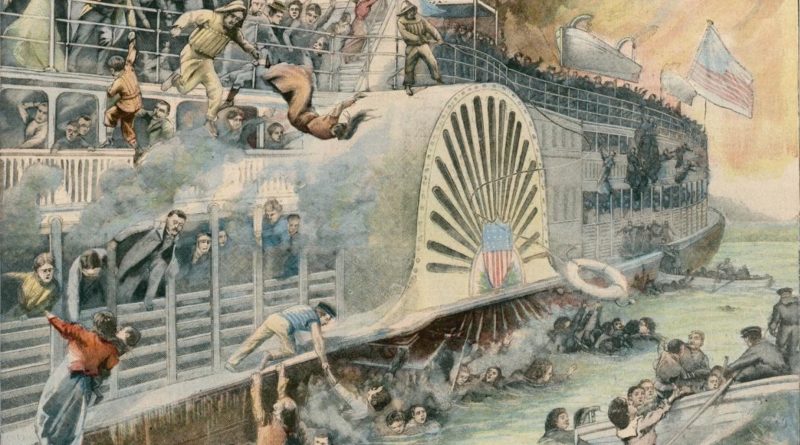
10 replies on “Remembering the General Slocum disaster, one of the greatest tragedies in NYC history”
A Very interesting and well done podcast. I live in Glendale just behind the All Faiths Cemetary which was formerly the Old Lutheran Cemetary and often visit the General Slocum Victims memorial. It is a beautiful monument the tragedy. I am from a Lutheran family of German descent and it saddens me at how the poor families that died that day are forgotten. I try to visit the memorial every June to pay my respects. I work as an educator at the Lower Eastside Tenement museum and as I tell the stories of the immigrants who lived in our building I will sometimes mention the Slocum on one of our tours that deals with German immigrants.
My God- A Disaster that need not have happened!!!
And yes — A Little known disaster…….
My wife’s paternal grandfather was almost a victim of this disaster. He was grounded that day for being naughty. He was supposed to go with the other kids in the German Lutheran church group.
His name was Adolph Haack.
Our great aunt, Katherine Michael’s Cohrs and her 3 children burned to death on the Slocum. The baby was burned to her breast. Her husband, Henry Cohrs, a milkman, watched in horror from the Manhatten shore. Fire departments also beckoned the ship to come to shore…Our great-grandmother was supposed to go as well, but our grandmother had symptoms of a “cold”, so they stayed home. As a result, our great- grandmother and grandfather went on to have 8 more children and numerous grandchildren and great grandchildren and so on. We try to teach our children about this disaster and the pain our Uncle Henry bore all his life. He was a kind, loving man and beloved by our family until his death. Thank you for this very informative and comprehensive production.
This should be remembered as much as Titanic, and it’s shameful it’s overshadowed due to class distinction at the time. We need to bring this forth and back to importance!
Very sad tragedy. Was remembered at Niederstiens restaurant where I worked for many years.
My grandmother Rebecca Arpen, almost nine was supposed to be on this excursion with her mother and three sisters but because the baby Grace was being colicky that day they did not go. My grandmother always used to say they were saved by the grace of Grace. She also spoke of a butcher who killed his wife after he forbid his daughter to go but the mother let her and she died. I couldn’t find anything recorded about that incident so don’t know if that’s true. I also have a cousin on my mom’s side who’s grandmother lost two sisters on the Slocum, Amelia Henzler who was 18 and Augusta 11 who was missing. There was also a brother Jacob who was 8 who got pulled out of the water with a hook and survived.
My Great grandmother was supposed to be aboard the Slocum that day with her four children. They had to stay home because one of the children had gotten sick. Needless to say I would not be here otherwise. The pastor of St.Marks had married her and her husband. My Dad told me the story and amazingly I found this site. My Mom’s family lived on E 85th where her dad was the building super and worked for Western Electric. I look forward to learning more about the area.
My aunt Edna Doering was a survivor of this disaster. She was thrown into the river and swam to a row boat. Her mom Ida, brother & sister did not make it. Her sister, Gertrude is my maternal grandmother. She remembered and told us about this many times. She was a brilliant teacher who taught me about electronics, science, & life. She fought to expose why this happened, and to make sure it never happened again. Fire & marine codes were updated & inspections of ships increased.
I am currently in the Fire Alarm Industry, for 31 years. My uncle was a Fire Captain in NJ.
You can keep her dedication to safety if you see something, say something. If something doesnt seem right, it may not be. Have someone that is trained in safety review what you observe.
My Aunt Edna lived to 94 years young. Her dad, my great grandfather Gustav Doering, was a pastor in the luthern church. My grandmother Gertrude ( Grammy) was the sweetist grandmother you could ever wish for.
My great grandfather Captain Joseph Rea was a tugboat Captain that helped pull survivors out of the water whichhe received a medal honoring him for it. The medal is currently in a museum somewhere in New York.